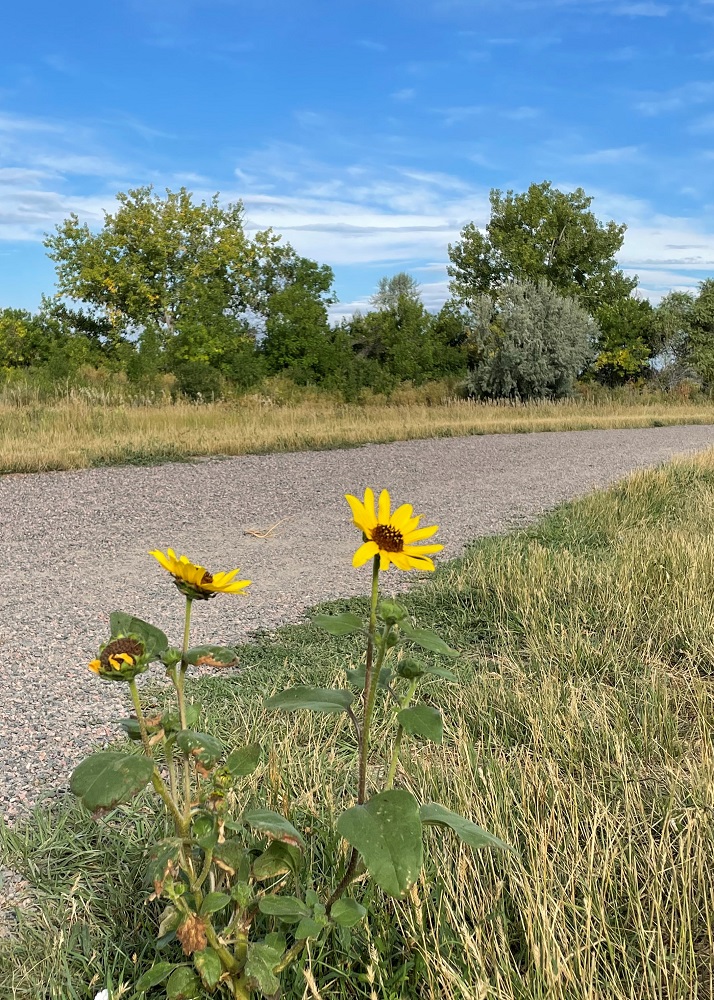Summer Native Plants with Yellow Blooms
There are many plants that have evolved over time in this area to live in the dry hot summer of the Colorado plains. In turn, wildlife including insects and birds have adapted to coordinate with the life cycle of these plants. I am heartened and inspired to find these plants thriving in the Willow Spring Open Space, proving that it is a natural space in the midst of suburban life.
Curly Cup Gumweed
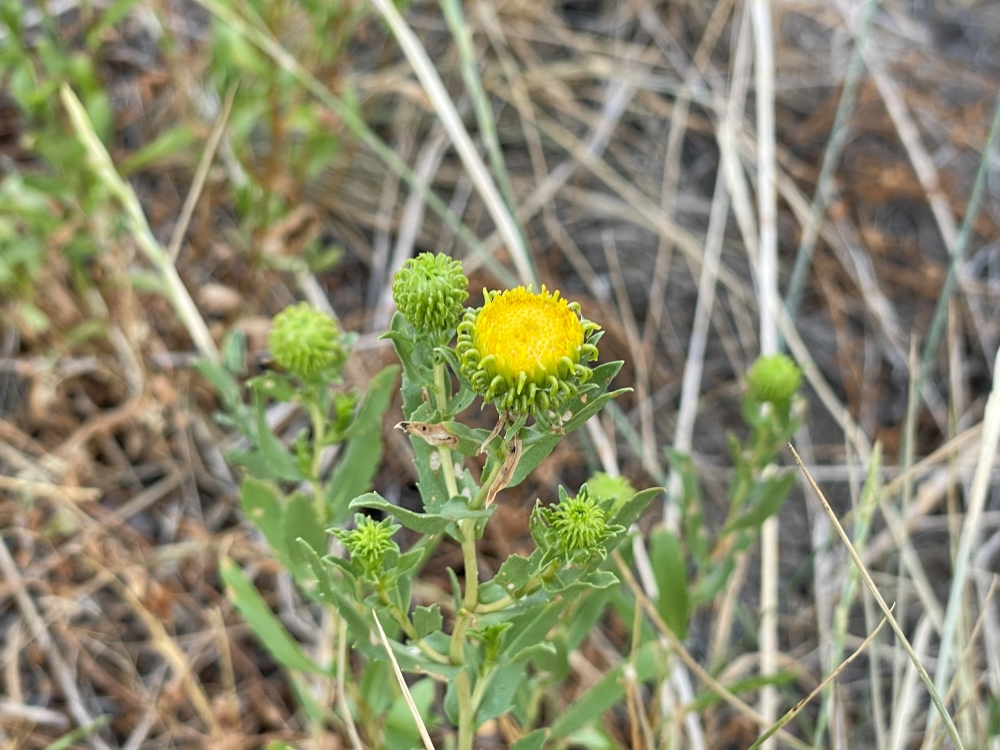
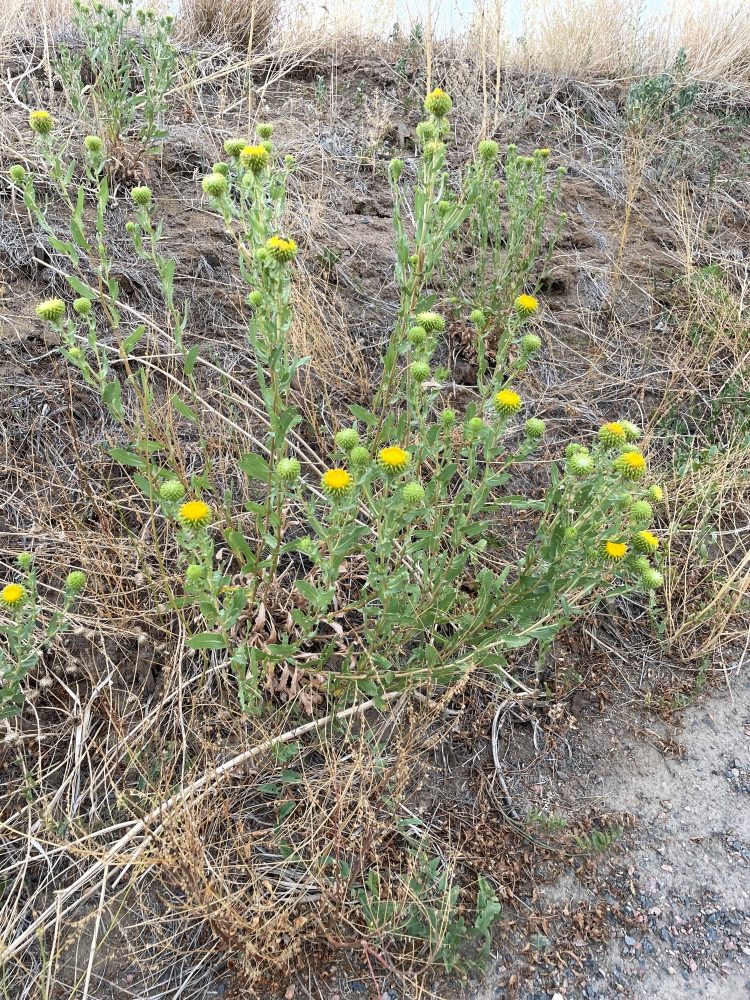
One of my favorite plants that thrives in the dry heat of the plains is the Curly Cup Gumweed (Grindelia squarrosa). It is a native plant in the Asteraceae or sunflower family.
It has a long bloom time of June through October, bringing a bright spot to a brown landscape. The bracts, or small leaf-like structures surrounding the yellow flower, curve backwards and are sticky, giving it the name of gumweed. These yellow flowers can be spotted along the top of the Englewood Dam and the paths that lead up and down the dam.
Common Sunflower
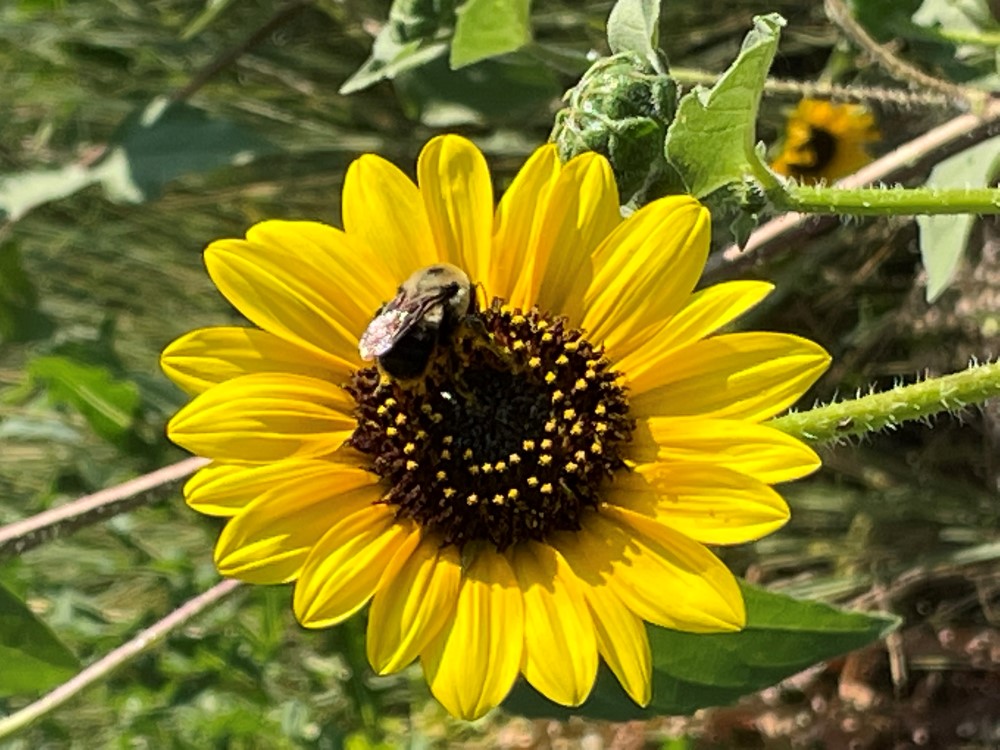
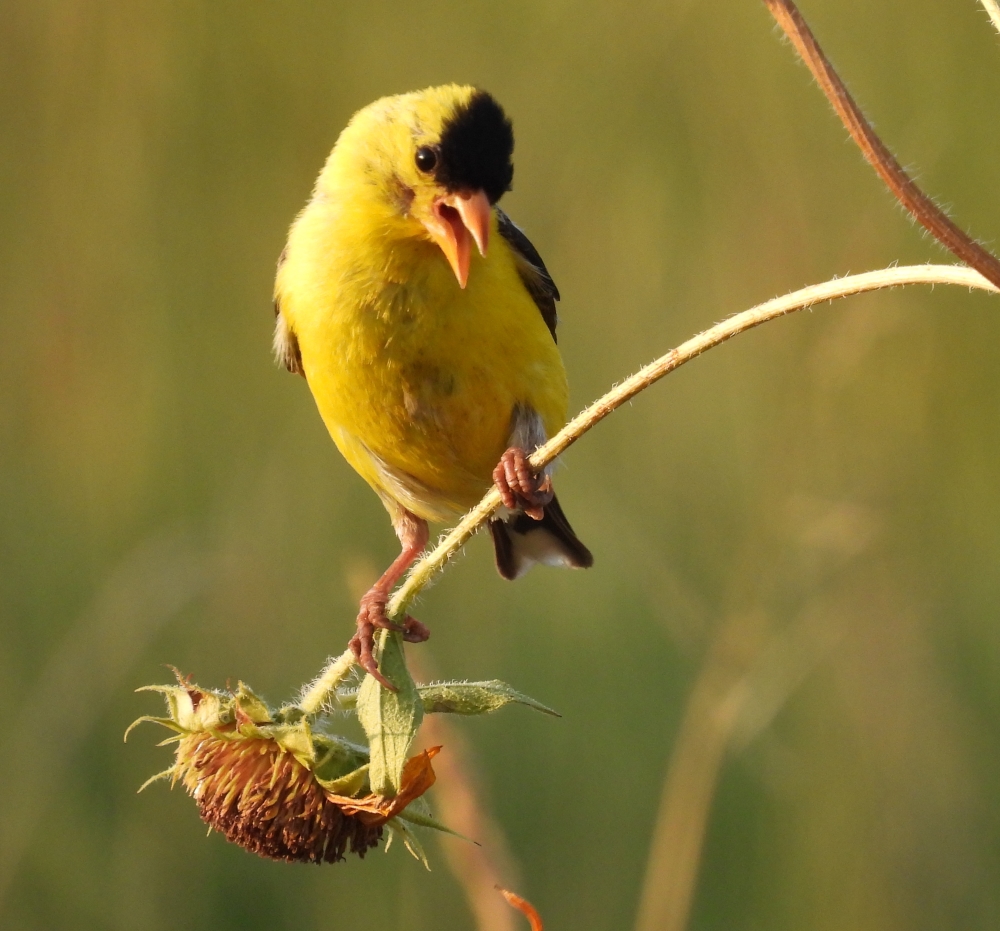
The Common Sunflower (Helianthus annus) is a very recognizable flower, blooming from June through October. It is an annual flower, which dies each winter and grows from seeds the next spring. It is a native plant in this area, drought tolerant and thriving in the plains and foothills.
The flowers of the Common Sunflower can be 1-4 inches across and the plant can grow to 2-8 feet tall. The flower shape of the sunflower provides a flat landing pad for pollinators which increases their overall success for distributing pollen and seeds for the next year.
As the seeds mature, American Goldfinches can be seen eating the seeds of the sunflowers. These seeds are not the same seeds that can be bought at the grocery store for snacks; those plants are a different species.
Golden Aster (aka Hairy False Goldenaster)
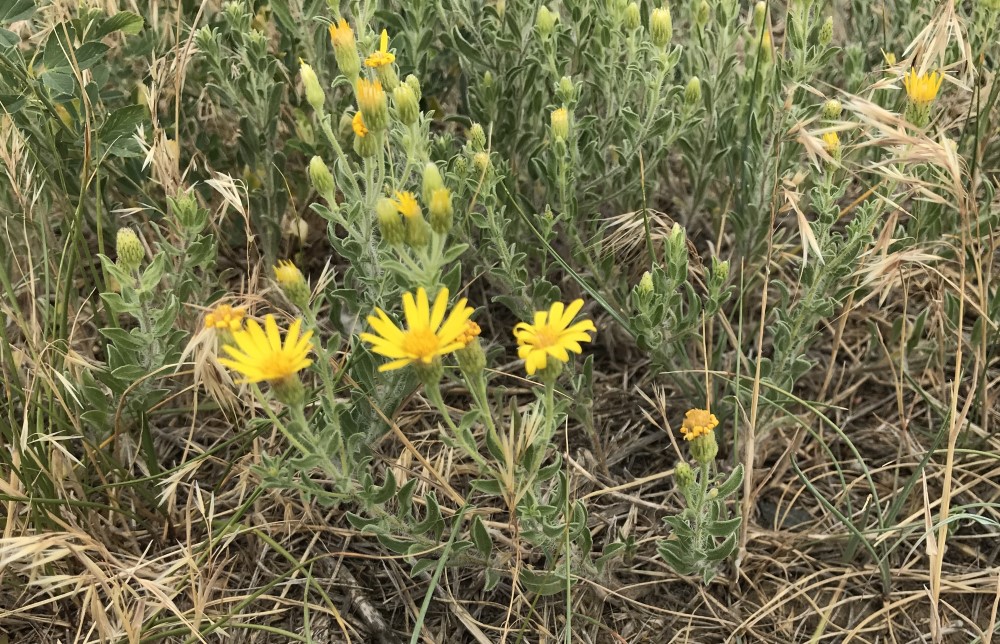
In the same family as the Sunflowers (Asteraceae), the Golden Aster (Heterotheca villosa) is much smaller and can be found among the grasses of very dry plains all the way up to subalpine elevations. With that elevation range, this plant is Native to most of Colorado.
It generally blooms June – August, and forms colonies by roots as well as spreading by seed. This is a perennial plant, which will come up from the existing roots year after year. It is referred to as hairy (villosa = hairy) due to the hairs on the leaves.
Broom Snakeweed
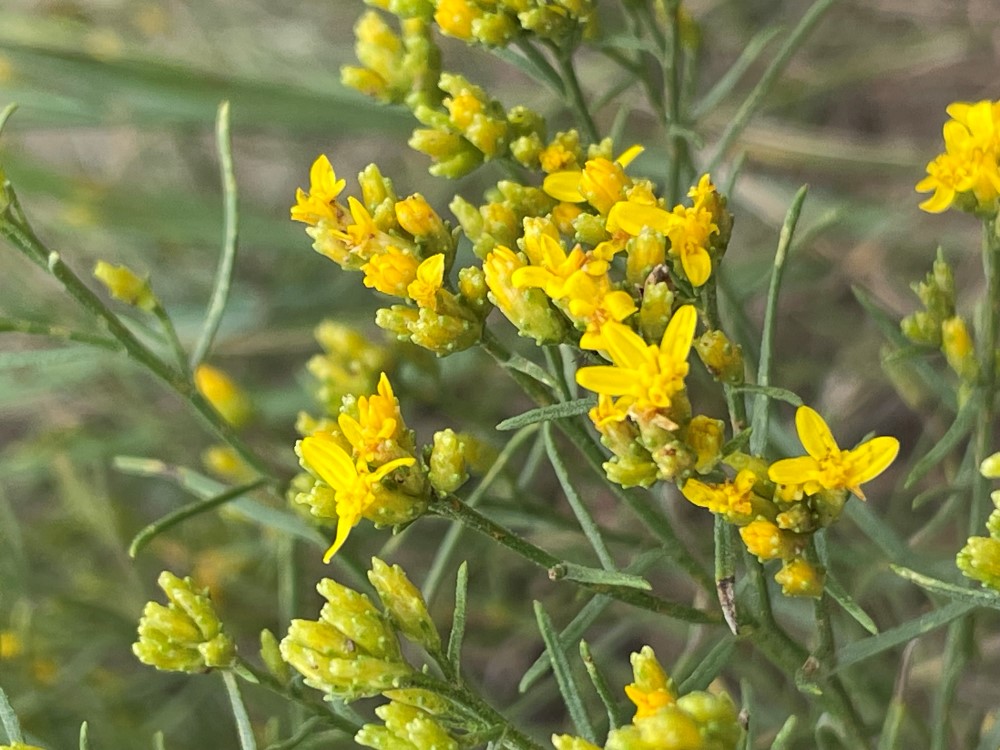
Broom Snakeweed (Gutierrezia sarothrae) is another yellow bloom in the sunflower family (Asteraceae). It is a Native plant in this area and thrives in dry, open places along with sage and rabbitbrush, and can bloom from August through September.
This flower is an indicator of overgrazing in an area as it is not palatable to wildlife. However, it has had its uses. In the past, dried stems were bundled to form primitive brooms and the flower heads were applied to snakebites, giving it the Broom Snakeweed name.
Non-Native Blooms
Some of the most drought-tolerant plants have been introduced here from other places. Unfortunately, they can dominate over the natural native vegetation, which has evolved to be in harmony with the local pollinators and birds. Many are quite pretty and have come from seeds from nearby household gardens.
Western Salsify
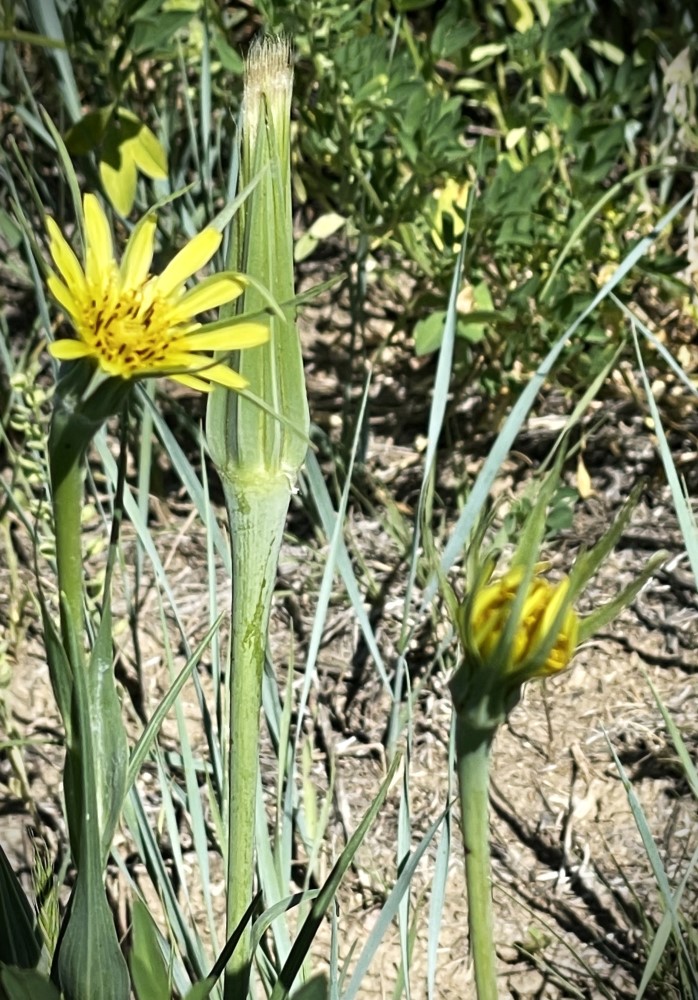
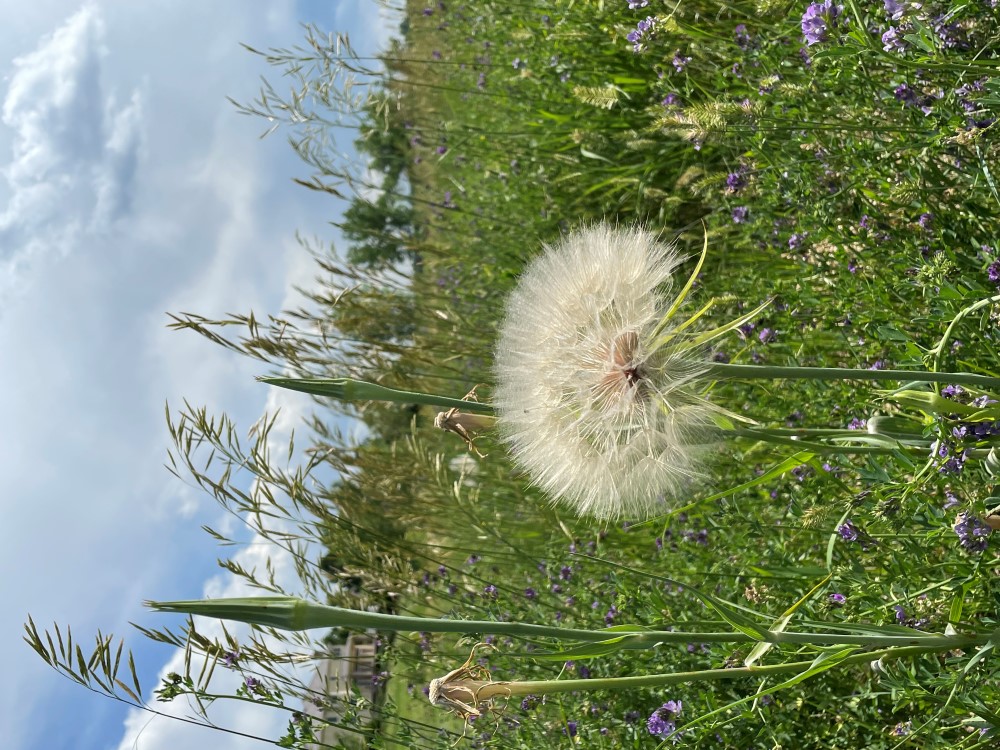
The Western Salsify, or goatsbeard (Tragopogon dubius) is a striking, tall yellow flower in the sunflower family (Asteraceae). Native to southern and central Europe and western Asia, it was brought to North America by early settlers as a food plant (the roots are edible when cooked) and ornamental. It can be found throughout the US and Canada, and blooms June through August..
The name “salsify” means a plant that follows the sun. The open flowers point towards the sun, closing around late morning or early afternoon. When unchecked, this can form dense stands that replace other native vegetation. The seed heads resemble dandelion seed heads, allowing for wind dispersal of the seeds.
Common Mullein
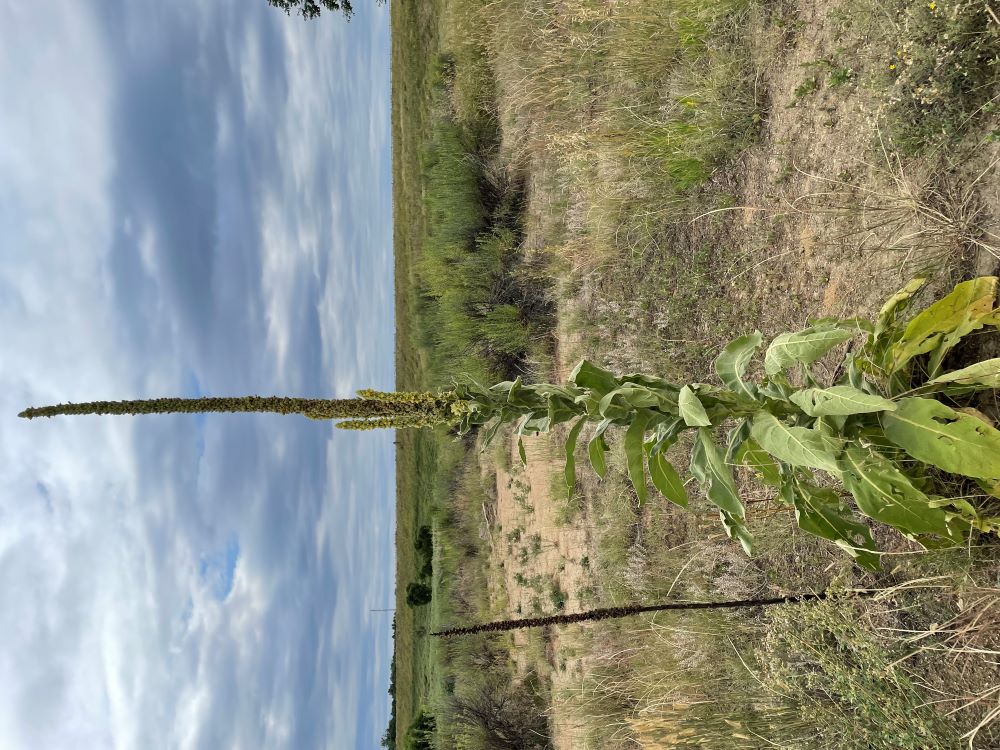
The Common Mullein (Verbascum thapsus) is a biennial plant that is officially classified as a noxious weed in the State of Colorado and many others. It is in the figwort family (Scrophulariaceae).
This plant is a biennial, living 2 years. In its first year, it is a rosette of soft, wooly leaves near the ground, which can be up to 3 feet wide. In the second year of the plant’s life, it shoots up the flower stalk that can reach 6 feet tall. The tiny yellow flowers are just 3/4 inch wide, and produce seeds that are viable for 80 years, just waiting for the right conditions to reproduce.
Dalmatian or Balkan Toadflax
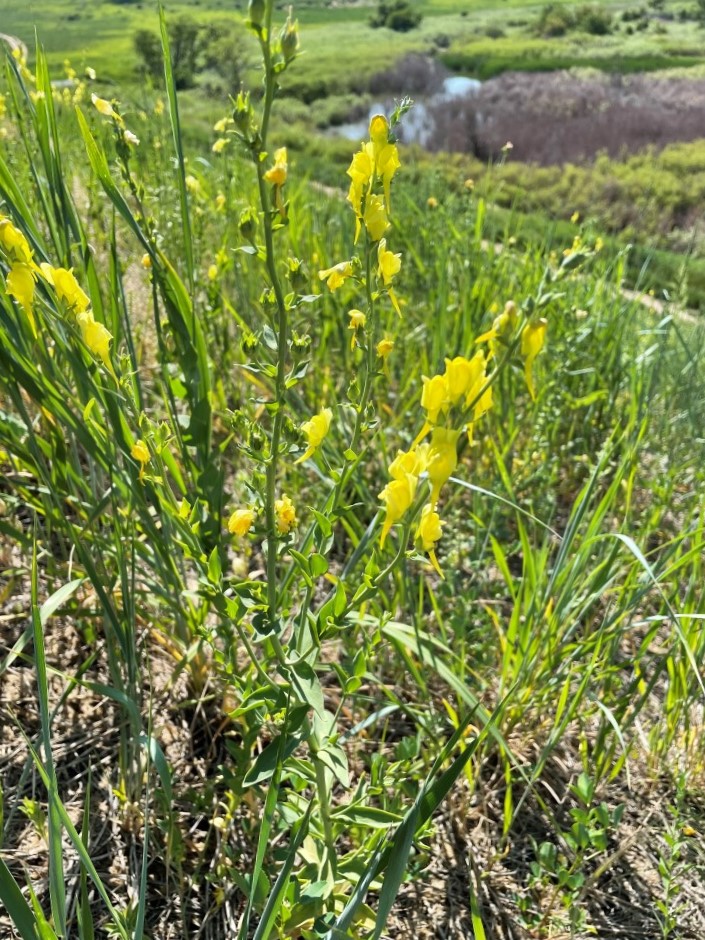
The Dalmatian toadflax (Linaria dalmatica) is a pretty yellow perennial about 1 to 4 feet high that reproduces by seed and root. It is most likely an escaped ornamental plant, blooming June to August. Native to Europe, it is an aggressive weed which has earned a place on the Noxious Weeds of Colorado List due to its ability to reproduce and take over areas, replacing native plants.
This flower can produce 500,000 seeds per plant which are viable for 10 years. Additionally, the roots can grow 6 feet deep and 12 feet laterally. It is in the Plantain family and is closely related to the snapdragon, which can be seen by the similarity in the flowers.
Yellow Sweet Clover
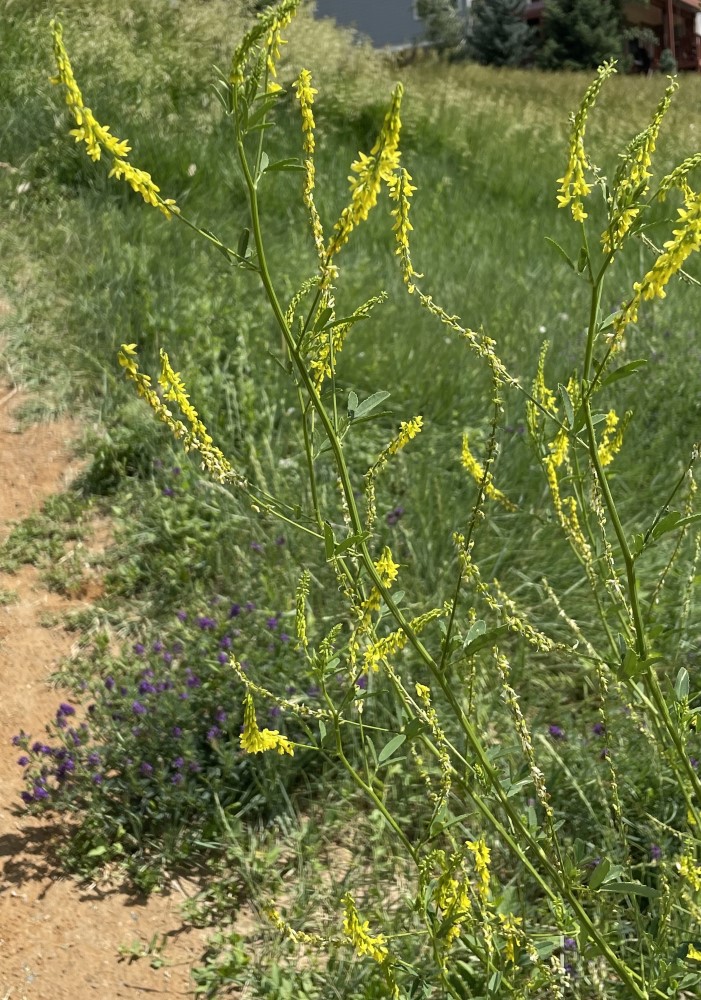
Yellow Sweetclover (Melilotus officinalis) is a plant in the Pea family (Fabaceae). It can grow 2 to 6 feet tall and has an airy appearance with small flowers along stalks, blooming from May to October. It can be found in roadsides, fields and in disturbed and weedy areas.
It was introduced as a forage plant and for beekeeping, however, if allowed to spoil while bundled into animal feed, a chemical in it (coumarin) breaks down into a toxic substance for livestock.
References and Further Reading
- Botany in a Day: The Patterns Method of Plant Identification, by Thomas J. Elpel, 1967
- Flora of Colorado, by Jennifer Ackerfield, 2015
- Colorado State University Extension, Colorado Native Plant Database Data Portal
- Noxious Weeds of Colorado, 14th Edition, Colorado Weed Management Association
- Wildflowers of the Rocky Mountain Region, Denver Botanic Gardens, 2018


